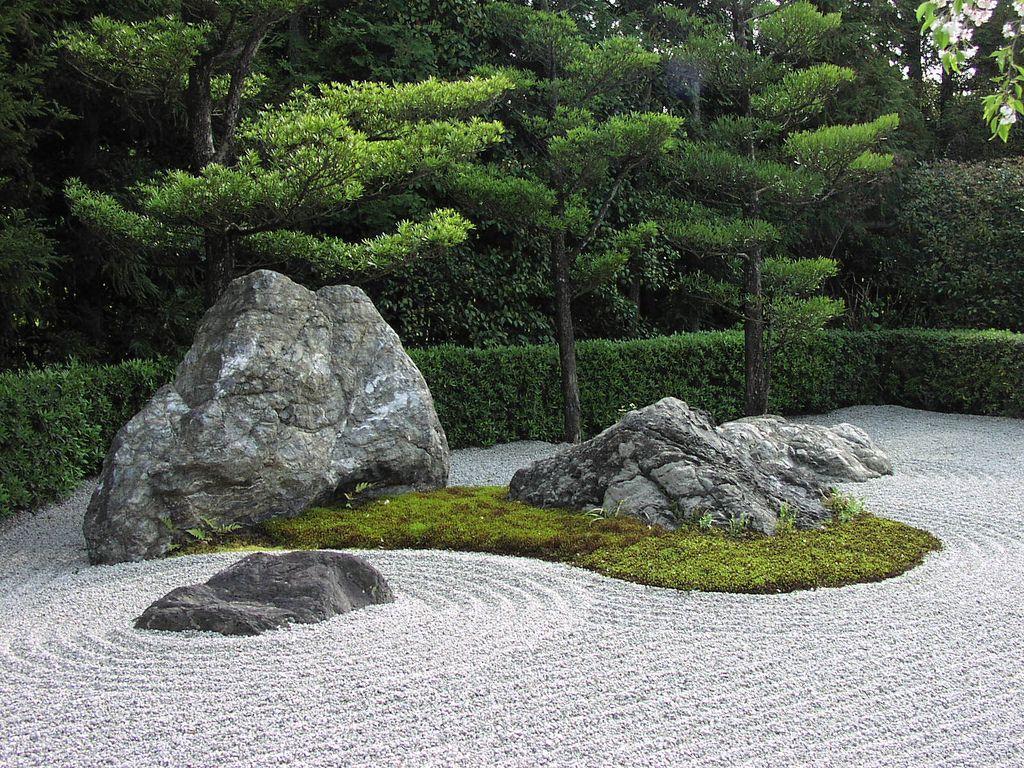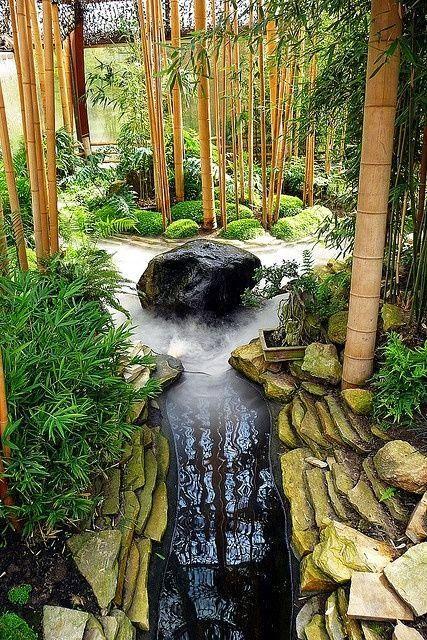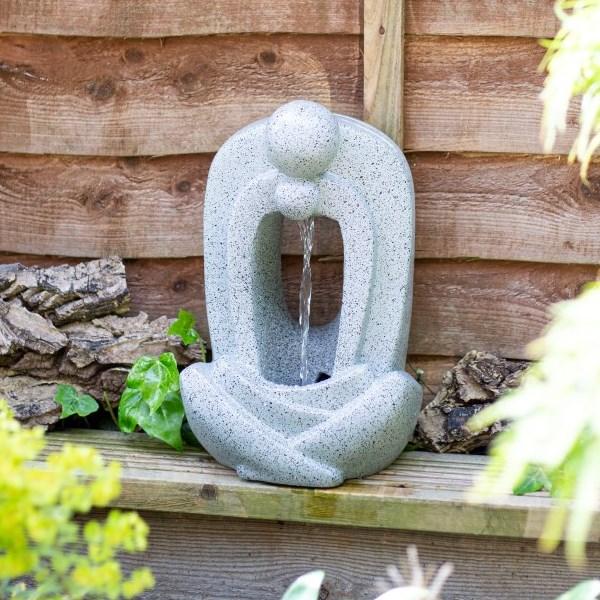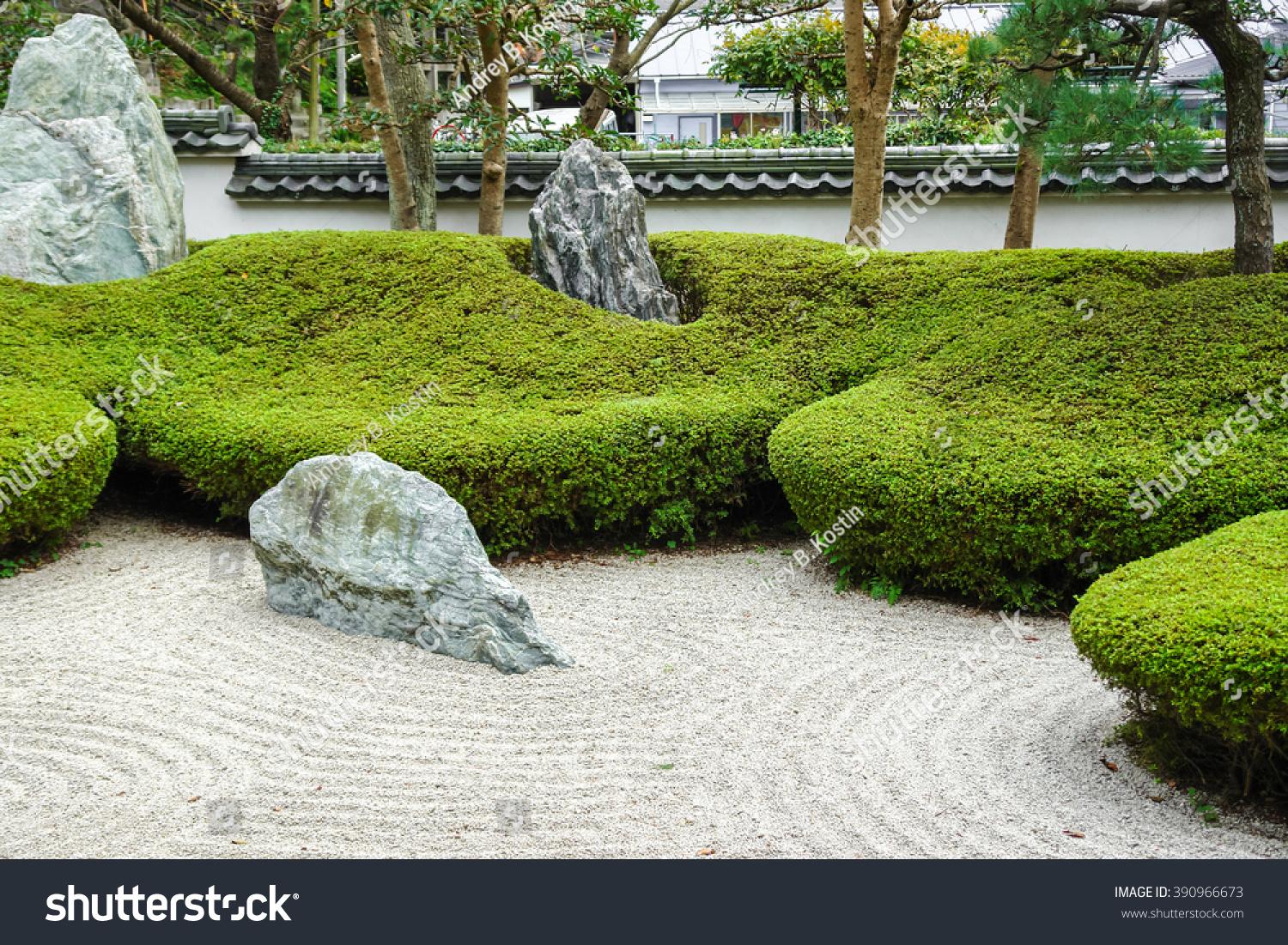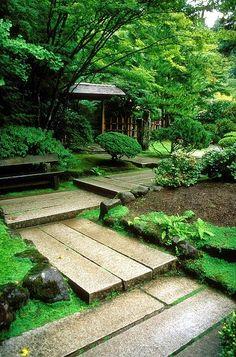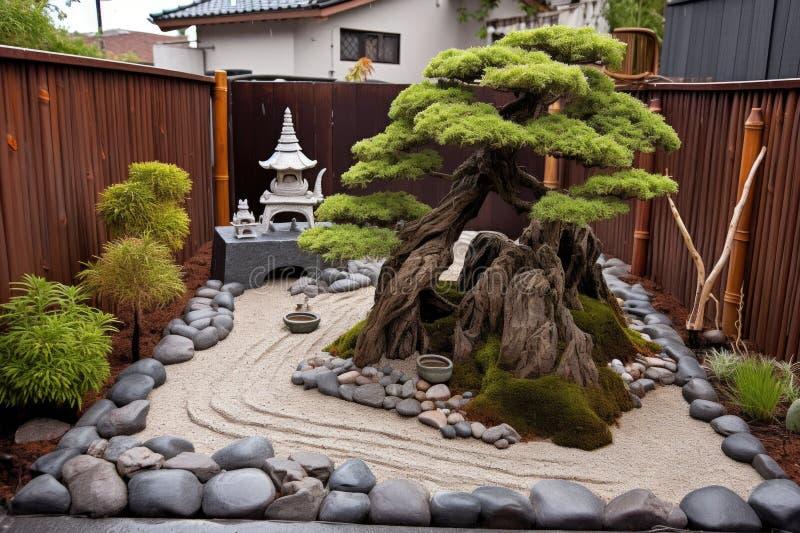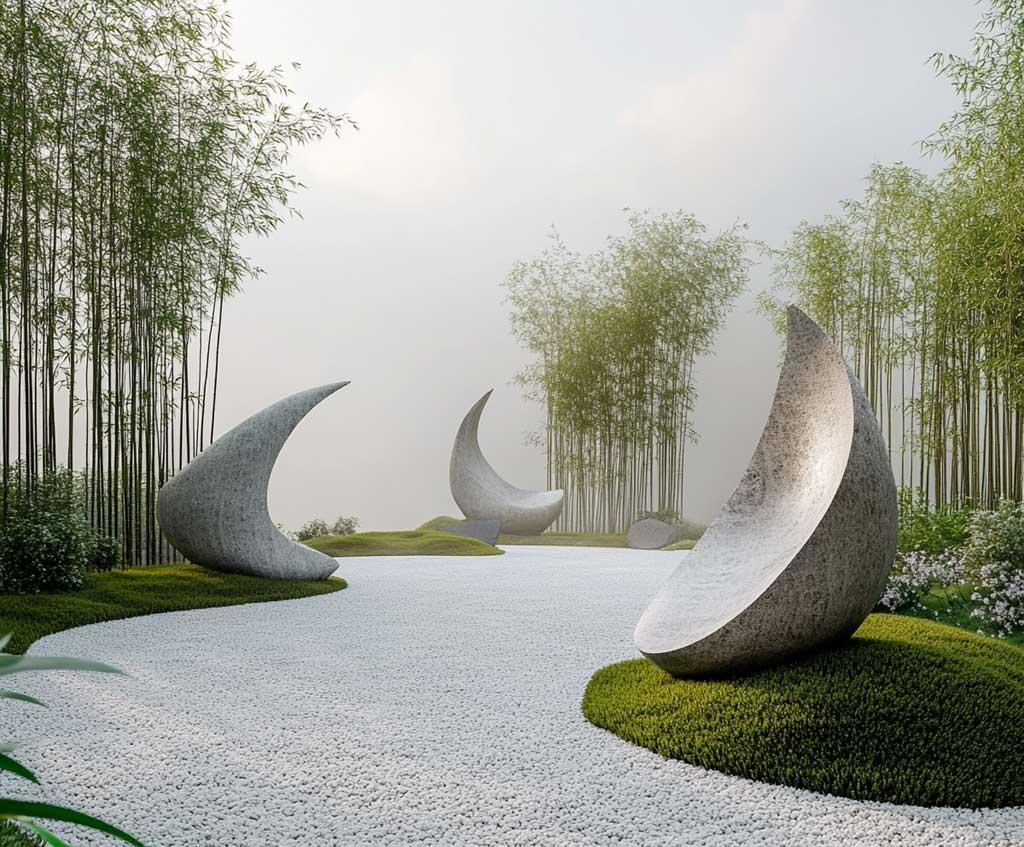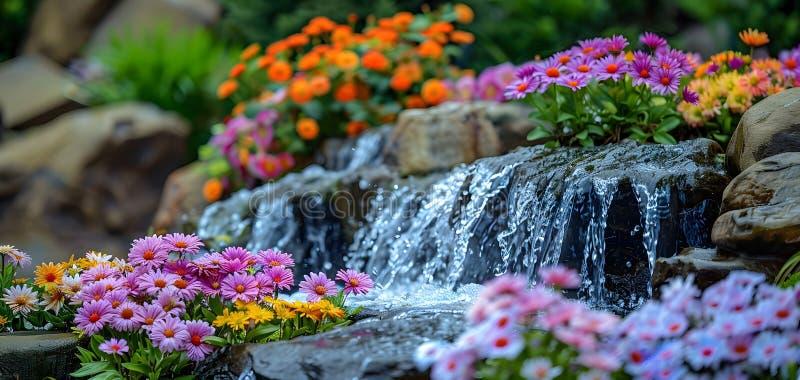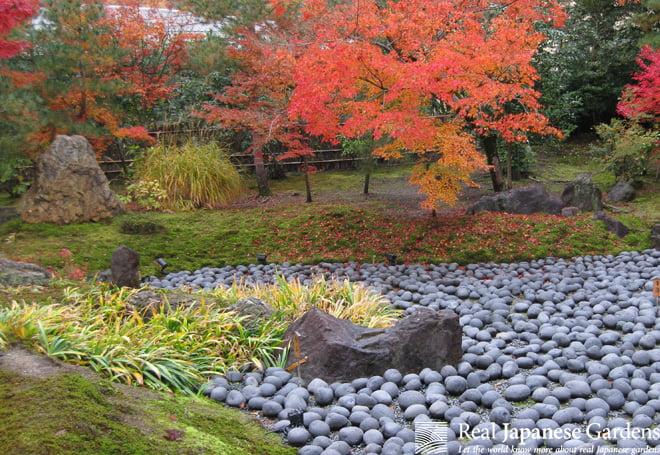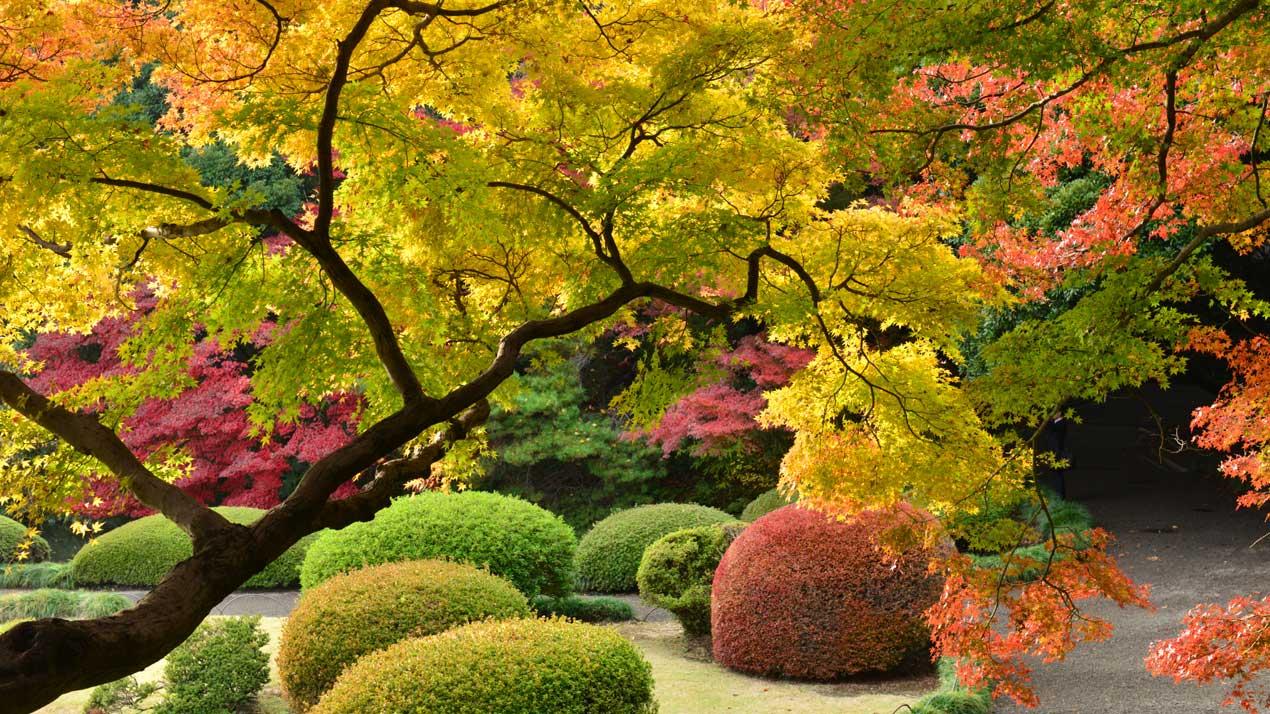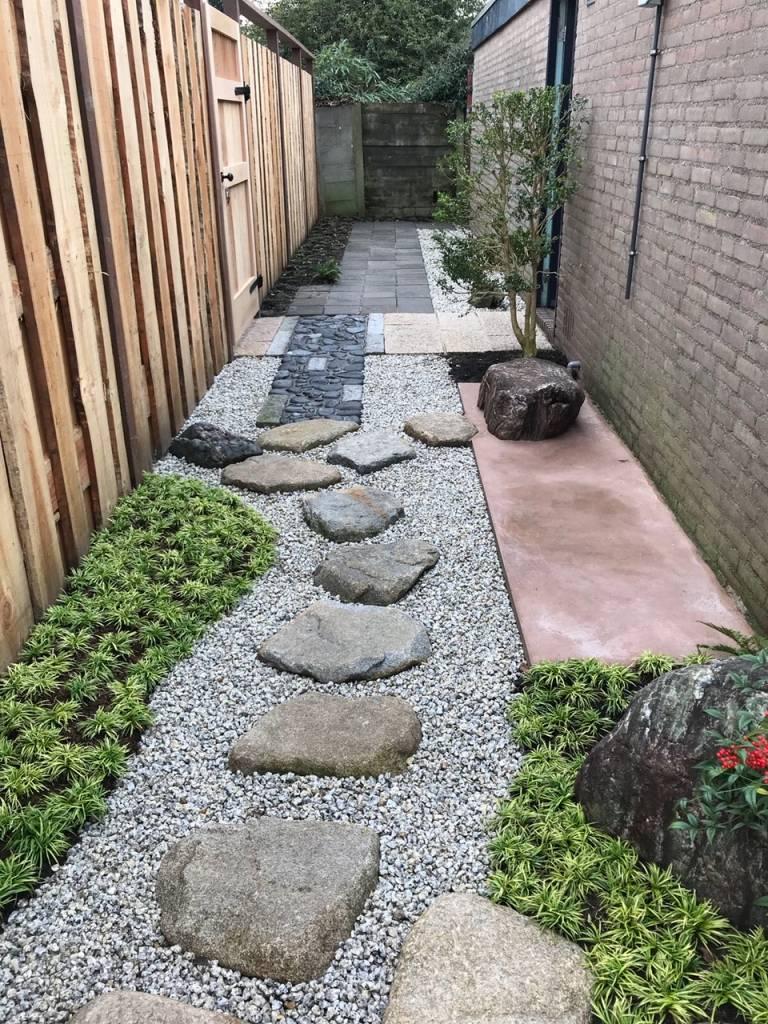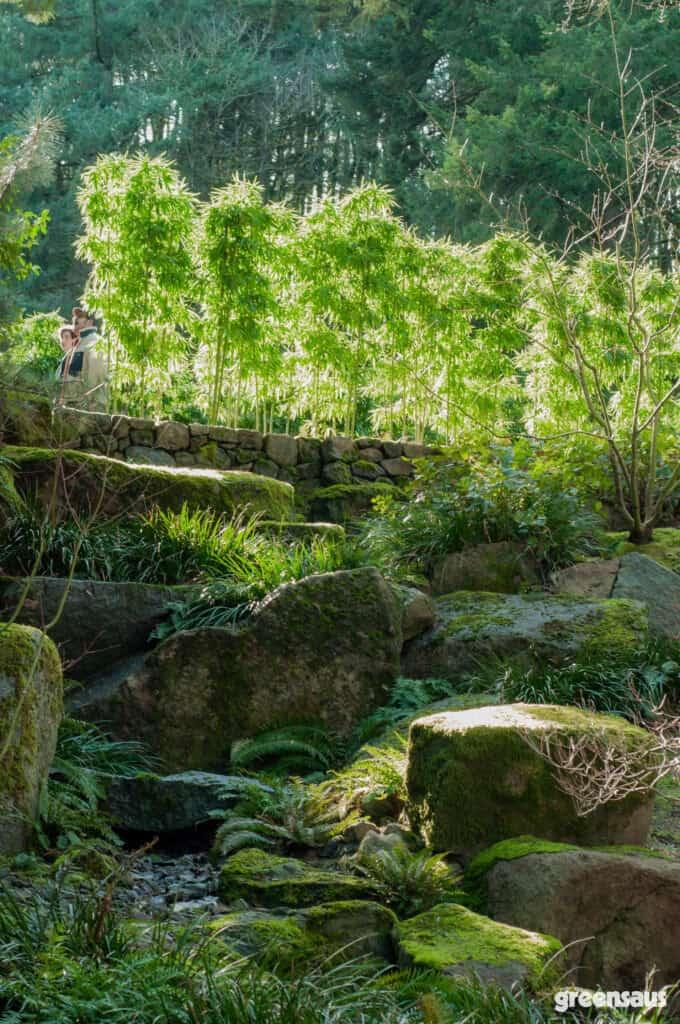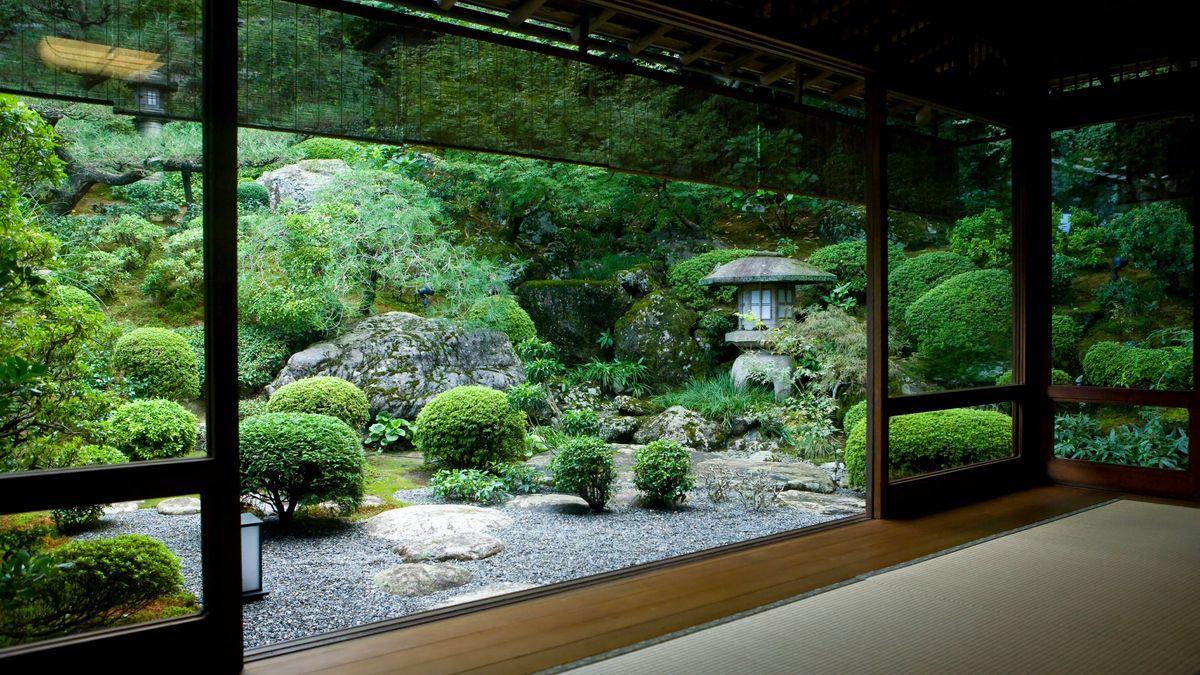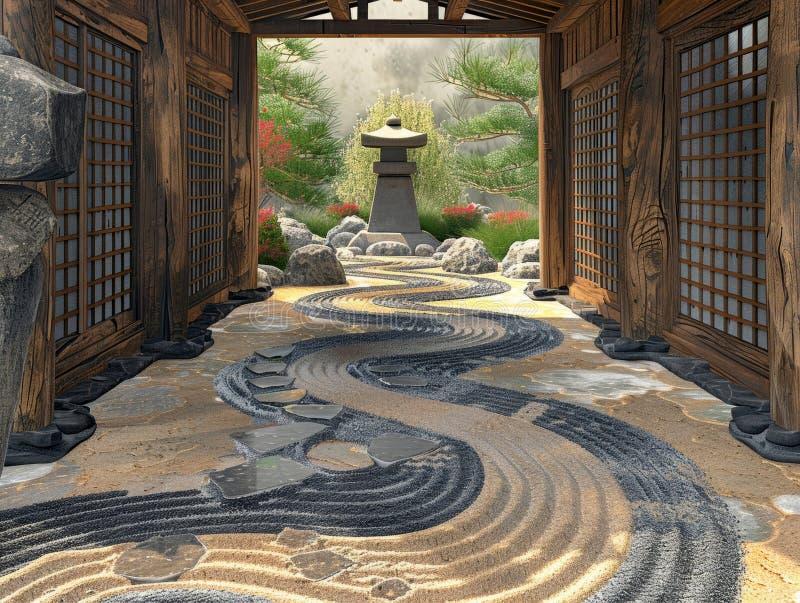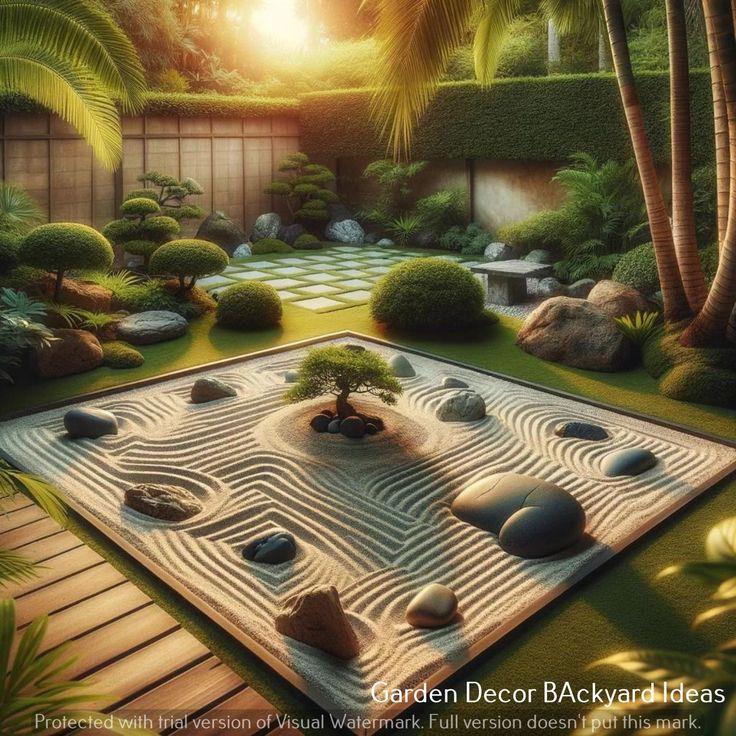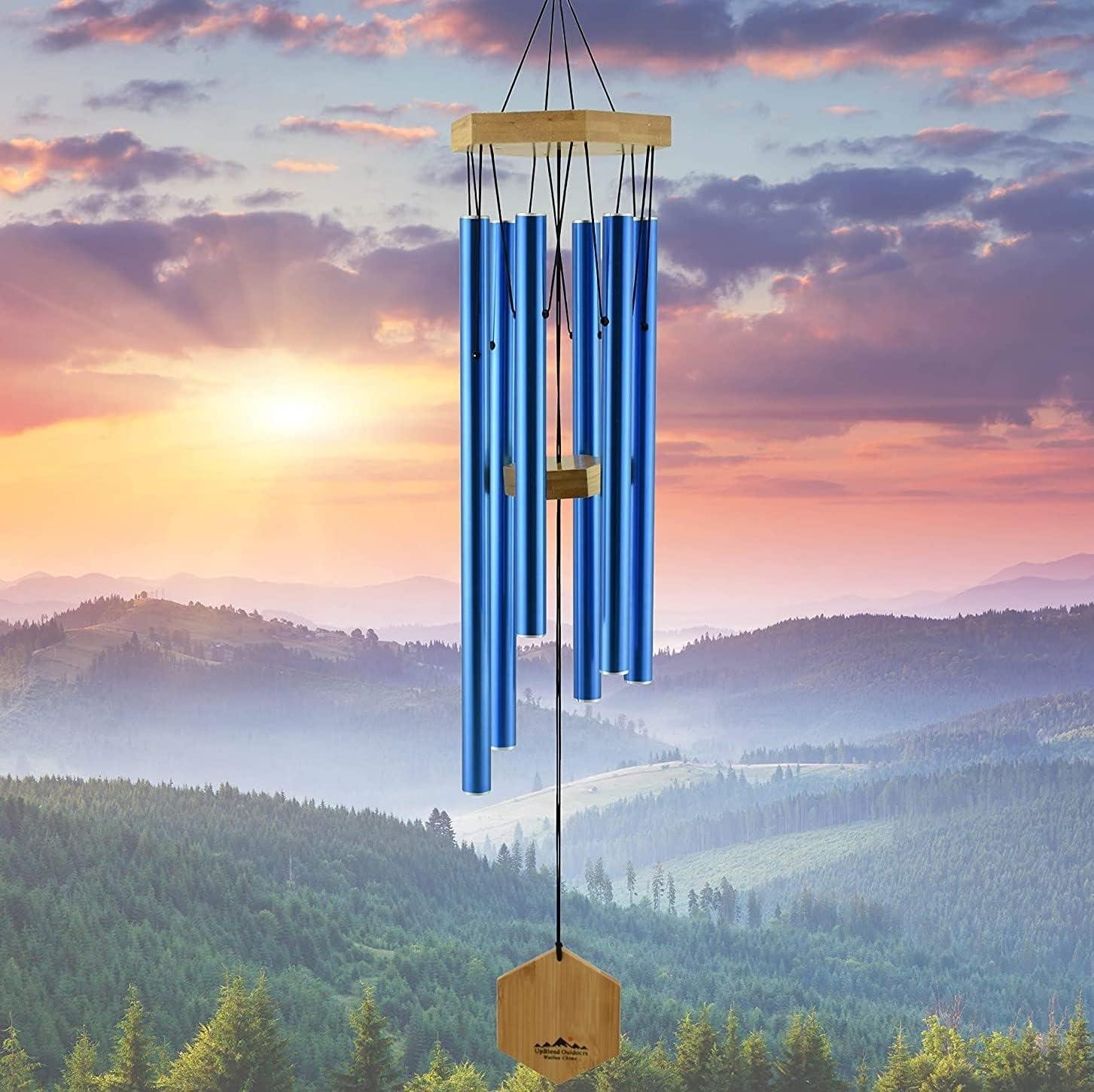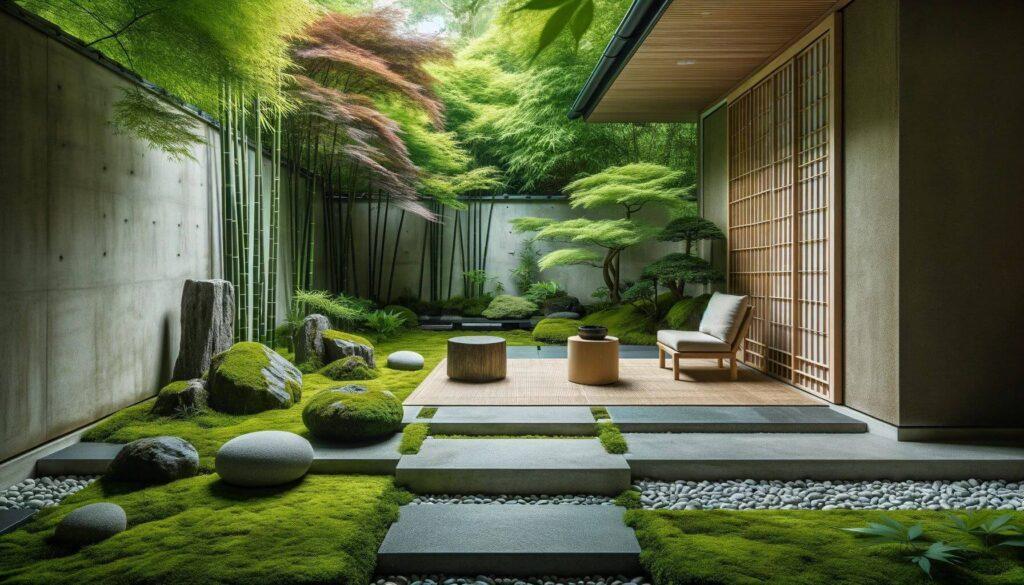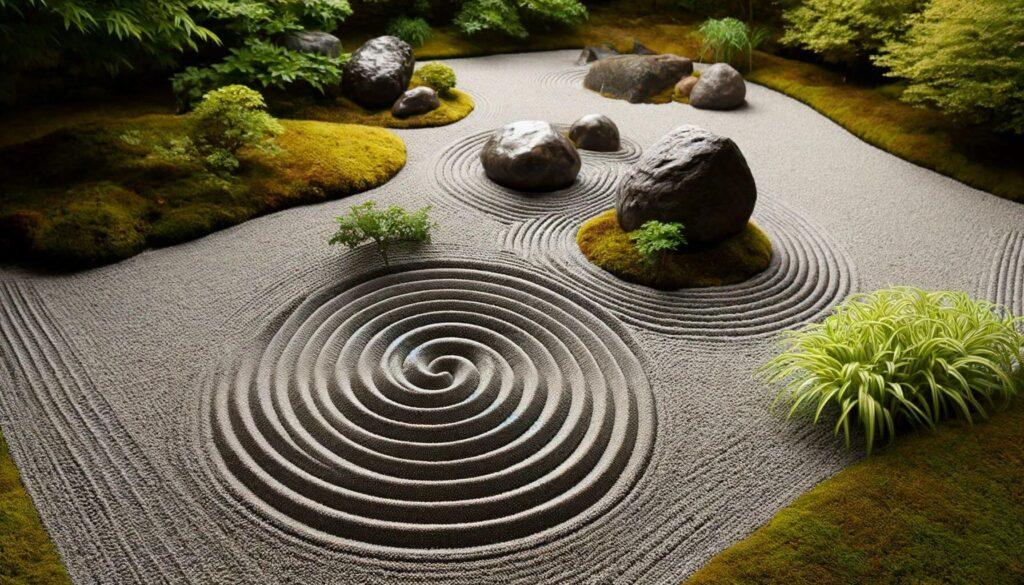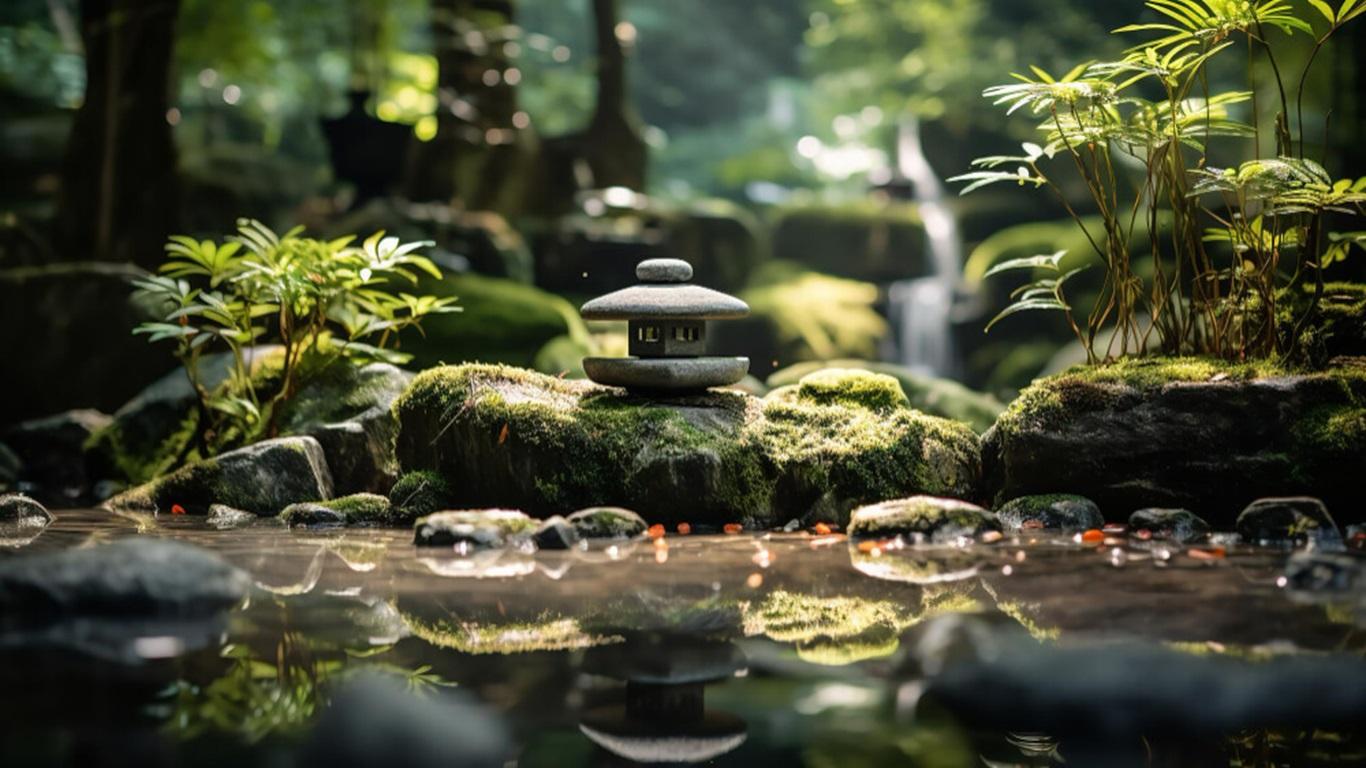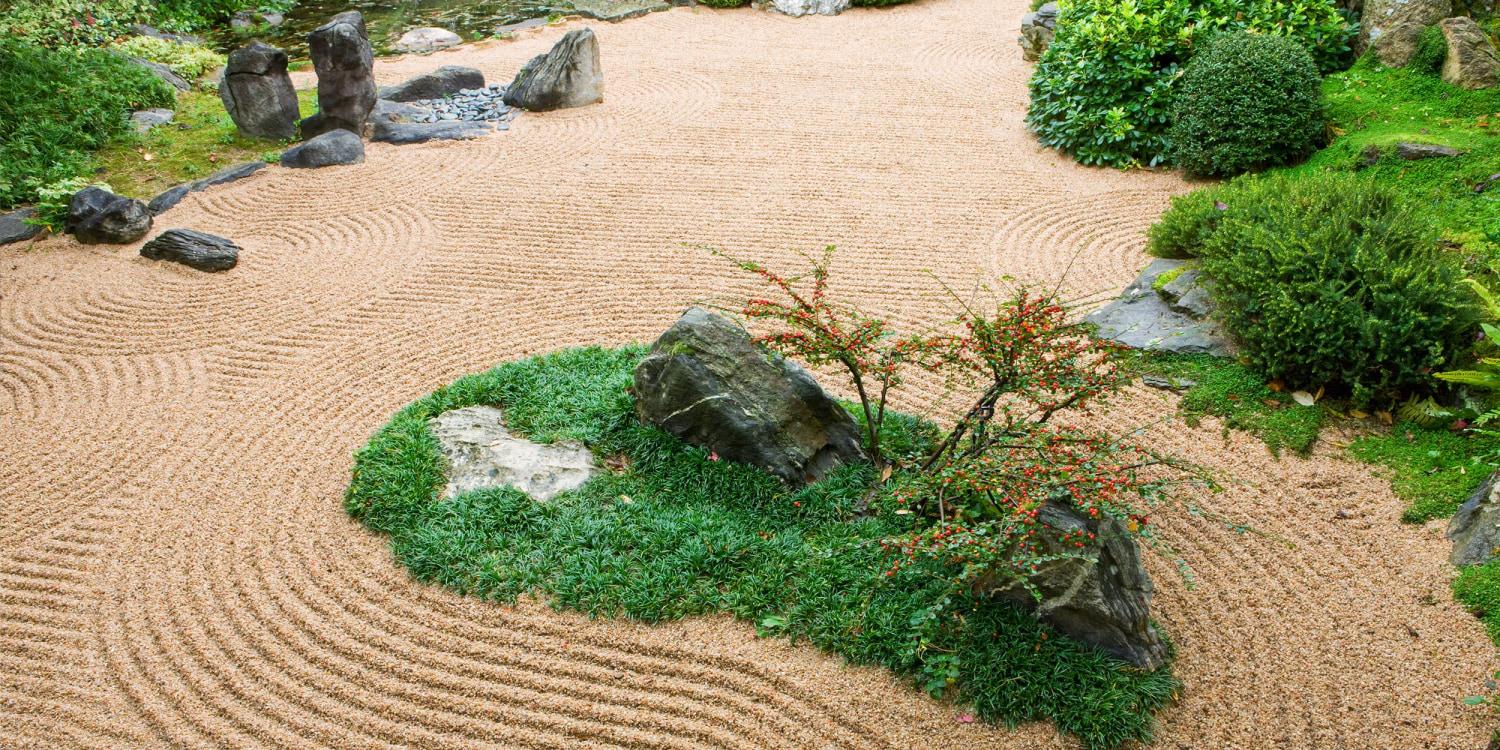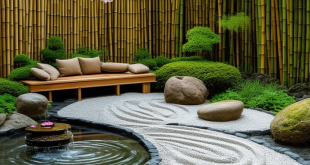In a world often filled with the chaos of everyday life, creating a serene sanctuary in your own backyard can be a transformative experience. A Zen garden isn’t just a collection of stones and plants; it’s a carefully curated space that promotes mindfulness, reflection, and inner peace. Whether you’re a seasoned gardener or a curious novice, this listicle presents 24 tranquil elements that can weave harmony into your garden design. From the gentle sound of flowing water to the calming presence of specific plants, each item provides inspiration to help you craft an oasis of tranquility. Join us on this journey to discover how you can cultivate a serene environment that invites contemplation and balance, bringing a touch of Zen right to your doorstep.
Smooth stones evoke balance and harmony in your Zen Garden oasis
Incorporating smooth stones into your Zen garden is a powerful way to cultivate an atmosphere of balance and tranquility. Their naturally rounded shapes and serene textures draw the eye, inviting contemplation and relaxation. Placing these subtle elements strategically can transform your garden into a harmonious oasis. Consider arranging them in focal points, creating winding paths, or using them as borders to define different spaces within your landscape. This mindful placement not only enhances the aesthetics but also promotes a sense of peace, encouraging you to pause and reflect amidst the beauty of nature.
When selecting smooth stones for your garden, consider various sizes and colors to add depth and dimension to your tranquil retreat. The calming effect can be further amplified by choosing stones with soft hues like whites, greys, and muted blues, as seen in the natural landscapes. Explore the virtues of different stones:
- River Stones: Ideal for pathways and water features.
- Pebbles: Perfect for ground cover or to accentuate larger rocks.
- Slate Stones: Great for creating a sophisticated modern look.
Utilizing these elements will not only enhance the visual appeal but also the spiritual essence of your Zen garden. For more inspiration and tips on garden design, visit Gardenista.
Bamboo creates a serene backdrop, enhancing the tranquility of your Zen Garden
Bamboo possesses an inherent elegance that establishes a tranquil atmosphere for your zen garden. Its tall, slender stalks sway gently in the breeze, creating a natural rhythm that calms the mind and soul. The soft rustling sound as bamboo leaves gently touch each other provides a soothing soundtrack, making it an ideal element for meditation and reflection. By incorporating bamboo, you not only enhance the aesthetic beauty of your garden but also align with nature’s harmonious spirit, fostering a deeper connection to the environment.
In designing your zen garden, consider the variety of bamboo species available to suit your space. From the delicate Fargesia that thrives in containers to the towering Phyllostachys, there are options for every garden size and style. You can create natural fencing with bamboo to frame your garden or opt for a bamboo fountain to add the peaceful sound of flowing water. Utilize bamboo walks or stepping stones to guide visitors through the serene landscape, encouraging tranquility with every step. For more inspiration on incorporating bamboo into your designs, check out bamboo.com.
A gentle water feature adds soothing sounds to your Zen Garden experience
A gentle water feature can transform your Zen garden into a serene oasis, providing a symphony of soothing sounds that mimic the natural world. The tranquil sound of water flowing mimics babbling brooks and distant waterfalls, creating a calming atmosphere that invites relaxation and contemplation. Choose from various options, such as fountains, dripping rocks, or small ponds, each offering unique auditory and visual experiences. Incorporating these elements into your design can help drown out the noise of the outside world, allowing you to immerse yourself in the present moment.
To enhance the sensory experience, consider positioning your water feature strategically within the garden to optimize sight lines and sound travel. Surround the water source with pebbles, soft moss, and carefully arranged plants to create a harmonious visual blend. Adding aquatic plants such as water lilies or submerged plants not only beautifies the water but also contributes to the ecosystem of your Zen garden. For ideas and inspiration on crafting your own soothing water sanctuary, explore resources from websites like Mother Earth News.
Soft moss carpets the ground, inviting peace in your Zen Garden retreat
Imagine stepping into a realm where the hustle and bustle of daily life dissipates into the soft embrace of nature. Here, lush moss carpets the ground, creating a natural tapestry that invites tranquility. You can choose shades of green that range from vibrant to muted, depending on the atmosphere you desire for your garden retreat. This unparalleled softness underfoot encourages a sense of grounding, while the gentle texture stimulates sensory exploration. Paired with smooth stones or carefully placed boulders, moss enhances the visual harmony of the space, guiding the eye and spirit toward serenity.
Integrating moss not only establishes a calming aesthetic but also promotes a healthy ecosystem. This resilient plant thrives in diverse climates, making it an eco-friendly choice for your Zen Garden. Consider adding elements such as stepping stones, bamboo fencing, or water features to complement the moss-covered ground. Together, these components invite reflection and meditation. Here are some ways to creatively incorporate moss into your garden design:
- Moss pathways: Create winding paths that encourage peaceful strolls.
- Moss walls: Install vertical gardens to enhance depth and privacy.
- Moss cushions: Design cozy seating areas around soft patches of moss for moments of solitude.
- Moss and stones: Arrange stones among moss for a balanced Zen aesthetic.
Explore more about the fascinating world of moss at mossandstone.com to discover tips on maintenance and varieties to enrich your garden experience.
Winding pathways guide reflection through the beauty of your Zen Garden
Winding pathways in a Zen garden not only create a visually appealing landscape but also serve as meditative trails that guide contemplation. As you stroll along these gentle curves, each turn invites you to stop and reflect on life’s intricate beauty, breathing in tranquility and exhaling stress. The sensation of gravel crunching underfoot, paired with the soft rustle of nearby bamboo, fosters a profound sense of connection to nature, encouraging mindfulness as you navigate the natural flow of your garden.
Consider incorporating elements that enhance this reflective experience. The placement of stepping stones invites exploration, while varying textures—like smooth pebbles alongside coarse sand—engage the senses and stimulate thought. For those who desire a more profound connection, a small water feature or stone lantern can serve as focal points of serenity. Harmonizing these elements in your design creates a landscape that not only showcases beauty but also nurtures the mind. For additional ideas and detailed designs, you can explore Japanese Gardening.
Carefully pruned bonsai trees symbolize patience within your Zen Garden space
In the bustling world we live in, a carefully pruned bonsai tree serves as a profound reminder of patience and dedication. These miniature trees, cultivated with precision and artistry, embody the essence of mindfulness in your Zen Garden. They invite contemplation, representing the journey of growth and resilience. By nurturing a bonsai, you cultivate not only the tree but also your own inner peace, as each clipping and shaping demands focus, discipline, and an appreciation for the passage of time.
Integrate a bonsai into your garden design to enhance the tranquil atmosphere of your space. Consider arranging your bonsai on a simple stone pedestal to elevate it visually and spiritually. Surround it with elements such as pebbles and gravel, which contrast beautifully with the lush greenery and promote Zen-like simplicity. A delicate stone lantern placed nearby can illuminate your bonsai during evening hours, casting enchanting silhouettes and encouraging quiet reflection. To further inspire a tranquil ambiance, explore different bonsai styles, such as:
| Style | Description |
|---|---|
| Formal Upright | Characterized by a straight trunk with branches of varying lengths. |
| Informal Upright | Features a trunk that bends slightly to create a natural look. |
| Cascade | Represents a tree growing down a cliff, with trailing branches. |
For anyone interested in diving deeper into the art of bonsai, Bonsai Empire offers extensive resources on techniques, styles, and tips for maintaining these little wonders. The presence of a bonsai tree not only enhances the beauty of your Zen Garden but also acts as a daily reminder to breathe, appreciate, and embrace patience in all aspects of life.
Delicate lanterns provide subtle illumination for evening tranquility in your Zen Garden
Transform your Zen garden into a sanctuary of calm and serenity by incorporating delicate lanterns that cast a gentle glow in the twilight hours. These enchanting additions not only enhance the aesthetic appeal of your space but also provide a soft illumination that invites relaxation and contemplation. Choose lanterns made from natural materials like bamboo or stone, as they blend seamlessly with the organic elements of a Zen garden. Consider the following styles:
- Japanese Stone Lanterns: Traditional and elegant, these lanterns evoke a sense of history and purpose.
- Hanging Lanterns: Suspend them from branches for a magical, floating effect.
- Bamboo Lanterns: Eco-friendly choices that add a rustic touch.
- LED Lanterns: For practicality and longevity, choose subtle designs that mimic traditional styles.
Strategically placing these lanterns along pathways or near water features can create a mesmerizing nighttime experience. When selecting your lanterns, keep in mind their size and scale in relation to your garden elements. A beautiful harmony will be achieved when the lighting complements the contours of your landscape instead of overwhelming it. Explore different designs:
| Lantern Type | Best For |
|---|---|
| Ground Lanterns | Paths and Shrubs |
| Hanging Lanterns | Trees and Pergolas |
| Wall-mounted Lanterns | Fencing and Walls |
| Floating Lanterns | Ponds and Water Features |
The appropriate lighting arrangement not only guides the way but also enhances the spiritual ambiance of your garden, making it an ideal haven for evening reflection. For more ideas and inspiration, check out Gardenista.
Minimalist sculptures inspire contemplation and calm in your Zen Garden design
Incorporating minimalist sculptures into your Zen garden can profoundly enhance its tranquility and meditative qualities. The simplicity of these forms invites introspection, creating a serene focal point that naturally draws the eye and calms the mind. Consider elements like smooth stones, bamboo structures, or abstract shapes that echo the understated beauty of nature. Each piece should serve a purpose, whether it’s to ground the space or inspire a moment of quiet reflection, blending seamlessly with the natural surrounding.
When selecting sculptures, opt for designs that evoke peace and harmony. Natural materials, such as stone, wood, or metal, can add an organic touch, while also ensuring durability in the outdoor setting. Here’s a quick overview of some ideal materials and their calming effects:
| Material | Effect |
|---|---|
| Stone | Imparts stability and permanence |
| Wood | Brings warmth and organic vibes |
| Metal | Offers sleekness and modernity |
| Clay | Encourages artistic expression and softness |
Adding a few carefully chosen sculptures can transform your garden into a true sanctuary. Remember to choose pieces that resonate with your personal aesthetic and philosophy. Visit The Metropolitan Museum of Art for more inspiration on how art can enhance your space and foster a deeper sense of calm.
Vibrant flowers provide gentle pops of color in your serene Zen Garden
Integrating vibrant flowers into your serene Zen garden infuses a sense of warmth and vitality that beautifully contrasts with the tranquility of the surrounding elements. Choosing flowers with varying hues can create gentle pops of color, transforming your garden into a subtle tapestry of life. Some excellent choices include:
- Japanese Iris: Striking deep blues and purples that bloom in the summer, adding elegance.
- Cherry Blossoms: Delicate pink blooms, a symbol of renewal and beauty.
- Lotus Flowers: Majestic and serene, floating on water, representing purity and enlightenment.
- Daylilies: Bright bursts of color with easy-maintenance care, thriving in various conditions.
To maintain the peaceful ambiance of your garden, consider creating harmonious color pairings. Planting in groups rather than single blooms can enhance the visual impact while still promoting a serene atmosphere. Here’s a quick reference for complementary flowers you might want to combine:
| Primary Flower | Complementary Pairing |
|---|---|
| Japanese Iris | Golden Marigolds |
| Cherry Blossom | White Azaleas |
| Lotus Flower | Pale Blue Water Lilies |
| Daylily | Lavender Hyssop |
With the right selection and arrangement of flowers, your Zen garden can evolve into a vivid showcase of nature, allowing tranquility and vibrancy to coexist beautifully. For more ideas on enhancing your garden design, visit gardenia.net.
Pebble arrangements create textural interest while maintaining serenity in your Zen Garden
Incorporating an array of pebbles into your garden design adds not only a tactile dimension but also a meditative quality to your space. By varying the size, color, and shape of the stones, you can create distinctive patterns that draw the eye and evoke a sense of calm. Consider arranging smooth river stones interspersed with coarse granite chips to provide a contrasting texture. The interplay between different types of pebbles stimulates interest while remaining true to the soothing essence of a Zen garden. Imagine the soft crunch of gravel underfoot as you walk through a space that feels deliberately curated yet relaxed.
To further enhance the serenity of your garden, creating designated zones using pebbles can help in meditation and mindfulness practices. For instance, a circle of lavender stones can signify a peaceful area for reflection, while lighter, sandy-colored pebbles can demonstrate a path leading toward an enticing focal point like a buddha statue or a tranquil water feature. Each section, uniquely textured with its selection of pebbles, invites exploration while maintaining an overall sense of harmony. Dive deeper into the art of Zen gardening and discover fascinating techniques at zenhabits.net.
A Zen Garden should flow naturally, mirroring nature’s own rhythm and grace
A well-designed Zen garden should evoke a sense of harmony, flowing seamlessly like the natural landscapes that inspire it. To achieve this, consider incorporating elements that mimic the undulating contours of hills, winding rivers, and the gentle sway of trees. Use curved pathways to guide visitors through the space, enhanced by thoughtfully placed boulders that resemble natural formations, creating focal points that draw the eye without imposing. Limit straight lines; instead, allow your stepping stones and benches to follow the softer curves of the surrounding flora, further enriching the garden’s overall tranquility.
Additional components that enhance this natural flow include soft grasses that can sway gently in the breeze, providing a soothing auditory backdrop, and water features that mimic the sound of a babbling brook, inviting reflection and calm. The strategic placement of rock gardens interspersed with carefully chosen seasonal plants offers visual interest throughout the year, allowing the garden to evolve and remain vibrant. Combine these elements thoughtfully to create a sanctuary that invites mindfulness and relaxation, where every stone and petal seems to dance to the rhythm of nature. For more inspiration, explore the resources at gardenia.net.
Graveled areas offer a peaceful surface for mindful walking in your Zen Garden
Creating a path through your Zen garden with gravel offers not just an aesthetic touch, but also serves a significant purpose for meditation and mindfulness. The crunching sound of footsteps upon gravel invites a sensory experience, grounding you in the moment and allowing your thoughts to flow freely. As you meander through these gravelled areas, you can reflect on the natural beauty surrounding you, transforming a simple walk into a form of moving meditation. The texture of the gravel beneath your feet encourages a slower pace, bringing awareness to each step taken. Consider the following elements that can enhance your walking experience:
- Variety in gravel size: Different sizes can create varied textures and sounds.
- Pathways that meander: Curved paths enhance the journey, rather than leading directly to a destination.
- Zen patterns: Rake patterns in the gravel can symbolize waves or ripples, adding a visual element to your walk.
- Interactive elements: Consider incorporating small stepping stones or pebbles to create points of focus along your path.
Moreover, the visual appeal of a well-maintained gravel surface extends beyond mere aesthetics; it promotes a tranquil atmosphere conducive to introspection. By surrounding your walking path with lush greenery or strategically placed rocks, you create an inviting contrast with the gravel, drawing the eye and soothing the mind. Ideal for quiet solitude or group reflection, these environments can nurture connections to oneself and others. To further amplify your garden’s serenity, think about the following additions:
| Element | Benefit |
|---|---|
| Plants | Provide calming greenery and enhance air quality. |
| Water features | Introduce soothing sounds that drown out distractions. |
| Seating areas | Encourage pauses for reflection and relaxation. |
Incorporating these elements into your Zen garden will not only enhance the beauty of the space but will also promote a deeper mindfulness practice. For more inspiration and ideas on garden design, visit Gardeners.com.
Traditional Zen bridges invite exploration and wonder in your gardens landscape
Traditional Zen bridges, often characterized by their graceful curves and elegant wooden structures, serve as enchanting focal points within a garden landscape. These bridges not only invite exploration but also evoke a deep sense of wonder, encouraging visitors to wander and reflect. They can be adorned with simple lanterns or draped with delicate greenery, creating a seamless connection between the water and land elements of your Zen garden. The materials used, typically wood or stone, blend harmoniously with nature, fostering a serene atmosphere that encourages mindfulness and meditation.
As you integrate a Zen bridge into your garden, consider the surrounding features that enhance its beauty. Reflective water pools, gentle stones, and lush moss can create an ideal setting for the bridge. A well-placed bridge allows for stunning views and acts as a pathway to new areas of discovery, creating a sense of journey within tranquility. Here are a few essential aspects to think about when choosing a Zen bridge:
| Aspect | Description |
|---|---|
| Design | Choose a style that complements the natural surroundings. |
| Material | Opt for weather-resistant materials like teak or stone. |
| Placement | Position it to highlight specific elements, such as water or rocks. |
| Scale | Ensure it fits proportionally within the overall garden layout. |
For inspiration on bridge designs and how they can elevate your Zen garden, explore National Trust, where you can discover the beauty and tranquility of expertly crafted landscapes.
Softly swaying grasses create movement and softness in your Zen Garden
In a Zen garden, the incorporation of grasses can transform your space into a living, breathing artwork. Softly swaying grasses, like ornamental fescue or feather reed grass, add not only texture but also a sense of calm as they dance gracefully with the wind. Their gentle movements create a mesmerizing visual rhythm that invites meditation and reflection. When choosing grasses, consider plants that bring varying heights and hues—this diversity enhances the overall aesthetics of your garden while promoting a soothing ambiance. Pair them with rocks, sand, or water features to establish a harmonious balance between rigid structures and flowing elements.
To truly make the most of grasses in your Zen garden, think about their strategic placement. Consider these factors for an ideal arrangement:
- Height Variation: Mix taller grasses in the back with shorter ones in the front to create depth.
- Color Palette: Choose varieties that harmonize well with other garden elements—greens, blues, and silvery tones can invoke tranquility.
- Seasonal Interest: Select grasses that offer visual interest throughout the year, ensuring your garden remains engaging in every season.
For a more defined structure, consider creating a small grouping or cluster of your chosen grass species. This not only draws the eye but fosters a sense of unity within the garden layout. A simple yet effective design could include a mix of low-growing grasses interspersed with stones, providing contrast and enhancing the serene feel of your garden. Explore different resources like gardendesign.com for inspiration on selecting the perfect grasses and creating the tranquil atmosphere you desire.
A shaded seating area encourages quiet reflection within your Zen Garden space
Creating a shaded seating area in your Zen garden is a pivotal element for fostering tranquility and introspection. Imagine a beautifully crafted bench adorned with soft, natural fabrics, nestled under a canopy of gentle branches or a carefully positioned pergola. This sheltered nook can be adorned with lush cushions and textiles that invite comfort, while the rustle of leaves overhead provides a soothing backdrop. Incorporating climbing vines or hanging plants can further enhance the natural aesthetic, allowing you to breathe in the fragrance of blooming flora as you sit in peaceful solitude.
Your seating arrangement can be complemented with features that promote mindfulness and reflection, such as a small water element nearby, like a fountain or a simple stone basin, which adds the calming sound of flowing water. To further enrich this space, consider adding small side tables made of natural materials for placing a cup of herbal tea or a journal. The inclusion of weather-resistant lanterns or tea lights can transform your seating area into a magical spot during dusk, allowing for contemplative evenings. For more inspiration on nurturing spaces that promote serenity, explore resources available at gardenista.com.
Simple raw wood elements bring an organic touch to your Zen Garden
- Weathered Wooden Benches: Incorporate a simple, rustic bench crafted from reclaimed wood. This not only provides a spot to sit and meditate but also adds a touch of natural aged beauty, embodying the essence of tranquility.
- Tree Stumps: Use tree stumps as both functional seating and unique decorative elements. Their organic shapes and textures bring an earthy feel to your garden, allowing the natural imperfections of wood to shine.
- Wooden Pathways: Create pathways with raw wooden planks or slices. These pathways seamlessly integrate with the landscape, guiding visitors through your serene retreat while highlighting the beauty of natural materials.
- Wooden Planters: Opt for hand-carved wooden planters to house your plants. The organic lines and unique grains of wood create an exquisite contrast against the greenery, making the plants feel even more alive.
- Natural Trellises: Design trellises from branches or bamboo to support climbing plants. This not only serves a functional purpose but also enhances the overall aesthetic with its organic, yet structured appearance.
| Element | Benefit |
|---|---|
| Wooden Lanterns | Adds warmth and soft lighting. |
| Logs as Borders | Defines spaces while complementing nature. |
| Wooden Statues | Infuses artistry and personality into the garden. |
Embracing simple wood elements in your Zen garden creates a harmonious environment where you can connect deeply with nature. Each wooden piece tells a story, showcasing the beauty of rustic charm that encourages mindfulness and relaxation. You can explore further about incorporating natural materials into your landscape design at landscapingnetwork.com.
Painted stones bring personality and fun while still being tranquil in your Zen Garden
Brightly painted stones can serve as delightful accents in your Zen garden, transforming the landscape into a canvas of color and personality while still maintaining a sense of serenity. These artistic elements can be strategically placed among gravel, sand, or plants to create a whimsical yet peaceful atmosphere. The contrast between the vibrant hues of the stones and the natural earth tones of your garden will stimulate the senses, adding layers of visual interest without overwhelming the tranquil ambiance.
To enhance the experience, consider painting stones with calming designs that resonate with Zen philosophy. You can incorporate patterns like waves, lotus flowers, or even simple mandalas that encourage mindfulness. Here are some ideas for stone themes:
- Nature-inspired designs featuring leaves, trees, or floral motifs.
- Inspirational quotes that invite reflection and gratitude.
- Symbolic icons like yin-yang or om that reflect balance and peace.
These painted stones can also serve as markers or guides throughout your garden, leading the way to meditation spots, seating areas, or features that deserve attention. To illustrate, consider the following simple guide for positioning your colorful stones:
| Position | Stone Design | Purpose |
|---|---|---|
| Pathway | Colorful arrows | Guide meditation paths |
| Near a water feature | Wave patterns | Enhance tranquility |
| Seating area | Meditative symbols | Create a sense of focus |
For inspiration on painting techniques and designs, you can explore Pinterest.
Aromatic herbs add sensory delight and serenity to your Zen Garden experience
Incorporating aromatic herbs into your Zen garden not only enhances the visual beauty but also creates an immersive sensory experience. Lavender, with its calming fragrance, can transport your mind to a place of tranquility. Consider adding sage, known for its earthy, herbal scent, which can soothe the mind and provide a refreshing contrast to the more floral notes in your garden. Thyme, with its subtle aroma, spreads a ground-hugging carpet of green that embodies resilience and harmony. The gentle breeze through these plants releases a symphony of scents that can help clear the mind, perfect for meditation or quiet contemplation.
For a more vibrant variety, basil offers a tantalizing aroma that can invigorate your senses, while rosemary brings an herbal freshness known for enhancing focus and clarity. Incorporate these herbs strategically around seating areas or winding pathways to create pockets of aromatic delight. Additionally, dressing your garden with chamomile not only adds charming flowers but also a sweet, apple-like aroma that promotes relaxation. You can easily make your Zen garden even more enchanting by exploring herbs like these. For more on the benefits of aromatic herbs, check out Rodale’s Organic Life.
Wind chimes provide gentle melodies that enhance the ambiance of your Zen Garden
Incorporating wind chimes into your Zen garden effortlessly weaves a sense of tranquility into the atmosphere. These delicate instruments resonate gently in response to the softest breeze, producing enchanting melodies that evoke a feeling of peace. Each note dances in the air, interacting harmoniously with the natural sounds of rustling leaves and flowing water, creating a subtle symphony that encourages mindfulness and relaxation. Choosing the right type of wind chime can enhance this experience, as different materials and designs generate unique tonal qualities that complement the serene environment.
When selecting wind chimes for your garden, consider these captivating aspects:
- Material Choices: Bamboo chimes create warm, earthy tones, while metal chimes deliver crisp and resonant sounds.
- Design Aesthetics: Opt for chimes that reflect your personal style or the garden’s theme, such as nature-inspired motifs or minimalist designs.
- Placement Locations: Hanging your chimes in areas with gentle airflow, while also ensuring they are visually integrated within the garden, can maximize their auditory beauty.
To help further enhance your selection, here’s a quick overview of some popular wind chime materials:
| Material | Sound Characteristics | Visual Appeal |
|---|---|---|
| Bamboo | Soft, mellow tones | Natural and rustic |
| Wood | Warm, earthy sounds | Traditional and inviting |
| Metal | Crisp and resonant | Modern and sleek |
With the right wind chimes, your Zen garden can become a sanctuary not just for the eyes, but for the ears too. For inspiration and more ideas on wind chimes, visit chime.com.
A meditation platform creates a dedicated space for mindfulness in your Zen Garden
Create a serene atmosphere in your Zen garden by incorporating a meditation platform specifically designed for mindfulness. The platform can take various forms, from a simple wooden deck to a stone pavilion surrounded by soft grass. This dedicated space allows practitioners to engage deeply with their meditation practice, fostering tranquility and clarity amidst the natural beauty of the garden. Essential features can include:
- Comfortable seating: Incorporate cushions or a low bench for support.
- Natural materials: Use bamboo, stone, or reclaimed wood to blend seamlessly with the environment.
- Shaded areas: Create overhead coverage with woven canopies or leafy trees.
- Visual serenity: Position it near tranquil water features or sculptural elements.
To enhance the experience, consider the integration of calming accessories that reinforce a mindful atmosphere. Subtle additions can further cultivate a sense of peace, turning your meditation platform into an oasis of reflection. Thoughtful elements may include:
- Calming soundscapes: Add a small water fountain for soothing trickling sounds.
- Natural scents: Include aromatic plants like lavender or jasmine around the platform.
- Artistic expressions: Feature sculptures or stones that inspire contemplation.
- Ambient lighting: Utilize lanterns or fairy lights for evening meditation sessions.
To get more inspiration on mindfulness practices and outdoor spaces, explore Meditation.com. Their resources can help you cultivate a harmonious environment that reflects your inner calm.
Decorative sand patterns remind us of nature’s artistry in your Zen Garden
Incorporating decorative sand patterns into your Zen garden allows for a captivating display of nature’s artistry. When raked into intricate designs, the sand serves not only as a medium for contemplation but also as a canvas that mirrors the soothing rhythms found in the natural world. Imagine drawing spirals that mimic gentle waves, or crisp lines that echo the contours of mountain ridges. These carefully crafted patterns can evoke a state of tranquility, inviting the mind to release the chaos of daily life and return to a place of peace.
To create stunning visual interest, consider using different colors and textures of sand. Light-colored sand can represent purity and clarity, while darker shades may instill a sense of calm and depth. You can also incorporate small stones or gravels that serve as accents, symbolizing the elements of earth and providing contrast. Below is a simple table of ideas you can explore:
| Sand Type | Pattern Ideas | Symbolism |
|---|---|---|
| Light Beige | Waves | Flow and Serenity |
| Dark Brown | Geometric Shapes | Stability and Strength |
| White Sand | Spirals | Harmony and Balance |
| Colored Sands | Swirls | Joy and Creativity |
Once the patterns are raked, consider how they can be further enhanced by the strategic placement of boulders, or by planting low-maintenance, drought-resistant plants that contrast beautifully against the smooth textures of sand. Each rake stroke and plant placement can become an expression of your inner self, offering an ongoing opportunity for reflection and realignment with nature. For further inspiration on creating sand patterns and cultivating a Zen garden, check out Gardenista.
Subtle color palettes promote a calming effect throughout your Zen Garden
Creating a serene atmosphere in your Zen garden starts with the right color palette. Subtle hues such as soft greens, gentle blues, and muted earth tones can weave a narrative of tranquility, inviting nature’s calming influence into the space. By employing colors that mirror the organic world—from the delicate blush of cherry blossoms to the earthy tones of pebbles and bark—you can cultivate a seamless connection with the environment. These colors don’t just soothe the eye; they also elevate the spirit, fostering a sense of peace and harmony as you wander through your garden sanctuary.
To enhance this calming effect, consider using a combination of harmonious elements that resonate with these subtle colors. A few ideas include:
- Soft Gray Stones: Natural stones in gentle grays provide a grounding effect.
- Pale Green Bamboo: This plant not only adds height but also brings a whisper of color that calms the mind.
- White Sand: Raked to create soothing patterns, it reflects light and offers a serene backdrop.
- Pastel Asian Lanterns: Softly lit, these lanterns create an inviting evening ambiance.
When planning your palette, it can be helpful to visualize how each element interacts with others. Here is a simple table to illustrate color pairing ideas:
| Color | Complimentary Element |
|---|---|
| Soft Green | Bamboo Fencing |
| Pale Blue | Water Features |
| Warm Beige | Sand Pathways |
| Light Gray | Stone Accents |
By integrating these thoughtfully chosen elements into your design, you’re not just creating a garden; you’re crafting an experience that encourages reflection and serenity. For more inspiration on color palettes and Zen garden elements, explore the beautiful ideas available at The Spruce.
Scented candles infuse your Zen Garden with peaceful fragrances during dusk
As the sun begins to sink beyond the horizon, transforming the sky into a canvas of soft hues, the addition of scented candles can elevate your Zen garden into a realm of pure tranquility. Delicate fragrances, such as lavender, jasmine, and sandalwood, create an ambiance that not only relaxes the mind but also enhances the sensory experience of your sacred space. The warm flicker of candlelight juxtaposed with the whispering sounds of nature invites you to unwind, providing a serene atmosphere that encourages reflection and mindfulness.
To truly maximize the peaceful essence of your garden during dusk, consider placing your candles strategically on stone pedestals or within rustic wooden holders. Here are some ideal scents that harmonize beautifully with the natural surroundings:
| Scent | Effect |
|---|---|
| Lavender | Promotes relaxation and stress relief |
| Jasmine | Uplifts mood and elevates spirits |
| Sandalwood | Enhances meditation and grounding |
| Eucalyptus | Clears the mind and invigorates senses |
When selecting scented candles, opt for those made with natural soy wax or beeswax to ensure a clean and healthy burn, allowing you to breathe deeply without worry. You can explore a wide variety of high-quality scented candles and their creative applications on sites like Etsy, where artisans craft unique fragrances to complement your sanctuary.
Natural barriers create intimate spaces, enhancing privacy in your tranquil Zen Garden
Creating intimate spaces within your Zen garden can be achieved beautifully through the strategic use of natural barriers. Elements such as bamboo screens, hedges, and stone walls can define sections of your garden, providing a sense of sanctuary and isolation. These barriers not only shield the eye but also allow you to select specific areas for meditation or reflection. Picture a secluded corner surrounded by tall grasses and flowering shrubs where the gentle rustle of leaves accompanies your thoughts, creating a perfect backdrop for tranquility.
In your design, consider integrating features like trellises adorned with climbing plants and quiet pathways lined with soft moss to guide visitors while providing seclusion. Furthermore, incorporating water elements such as small ponds or fountains can enhance the auditory experience and mask outside noise, making your space feel even more private. By combining these elements thoughtfully, your Zen garden will amplify feelings of serenity while allowing you to embrace the solitude necessary for introspection. For more inspiration on garden design, explore Gardenista.
The Conclusion
As we conclude our exploration of the 24 tranquil elements that can elevate your zen garden design, we hope you feel inspired to cultivate your own serene sanctuary. Each stone, plant, and piece of decor offers a unique opportunity to reconnect with nature and cultivate mindfulness in our increasingly busy lives. Whether you choose to incorporate soothing water features, delicate lanterns, or the simplicity of carefully placed gravel, remember that a zen garden is a reflection of your personal journey toward tranquility.
As you embark on this creative endeavor, let each choice resonate with your own sense of peace and harmony. Feel free to experiment, adapt, and grow; the beauty of a zen garden lies not only in its aesthetics but also in the moments of calm it provides. So take a deep breath, gather your materials, and start transforming your space into a haven of relaxation. Your journey toward inner peace starts now—embrace it, nourish it, and enjoy the serenity that unfolds.
As an Amazon Associate I earn from qualifying purchases.
 decorafit.com Design ideas for your home and patio
decorafit.com Design ideas for your home and patio

